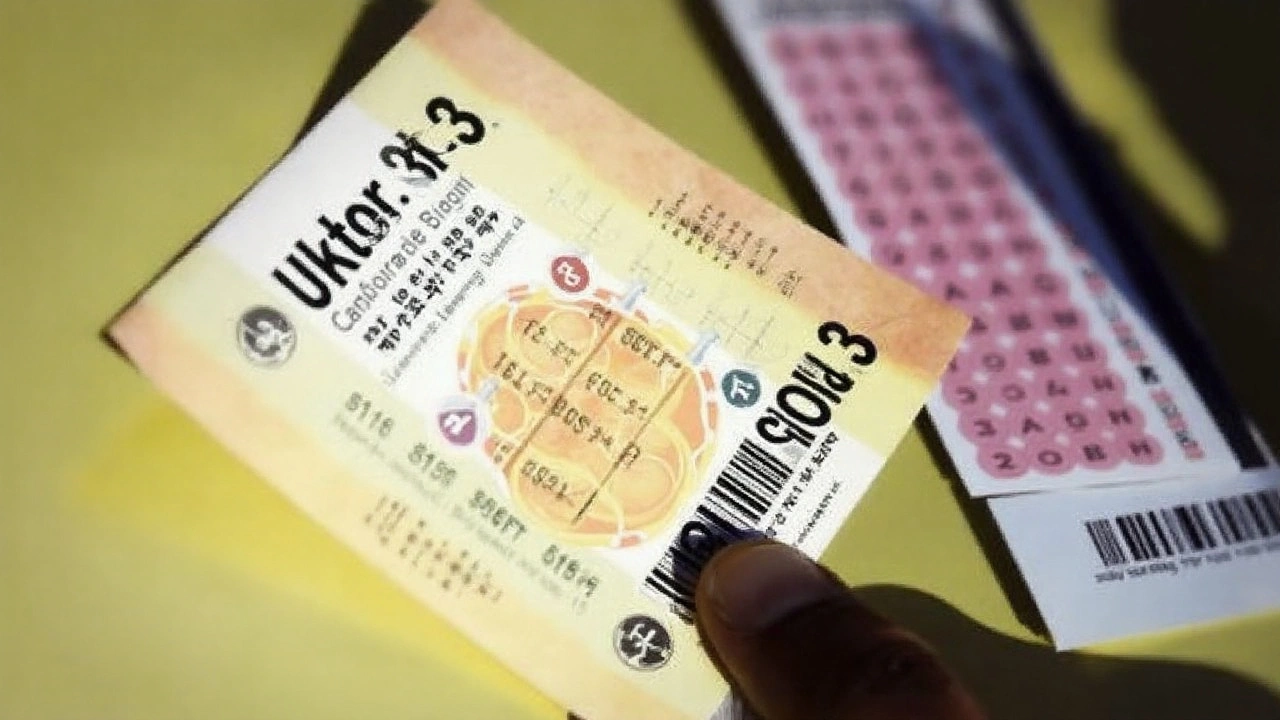Why the Lottery is Back on the Table
For more than two decades the hills of Himachal Pradesh have been free of legal lotteries. In July 2025, however, Chief Minister Sukhvinder Singh Sukhu’s cabinet gave the green light to restart the game, hoping it will plug a gaping fiscal hole. The state’s debt has ballooned to north of Rs 1 lakh crore, a figure that keeps climbing as central allocations shrink and the GST compensation fund dries up.
Deputy Chief Minister Mukesh Agnihotri heads the Resource Mobilisation Committee that recommended the change. Their report stresses that dozens of Indian states are already raking in cash from lottery sales, and the hill state could follow suit without raising taxes or cutting services.
What makes the proposal attractive is its low‑cost, high‑return nature. The finance department projects an annual intake of Rs 50‑100 crore, a sum that could cushion the budget for essential projects like road repairs and disaster mitigation.
Historical Backdrop and Social Concerns
The original ban was set in motion in 1999 by then‑Chief Minister Prem Kumar Dhumal of the BJP. Under Sections 7, 8, and 9 of the Lotteries (Regulation) Act, 1998, any lottery activity was made a punishable offense. The move was a direct response to growing evidence that lottery gambling was tearing families apart—people were selling land, mortgaging homes, and, in some tragic cases, committing suicide after losing big.
Even before that, the High Court in 1996 had taken suo motu notice of a single‑digit lottery scheme that many argued was a thinly veiled form of gambling. The court’s intervention paved the way for a full‑scale prohibition three years later.
Fast‑forward to 2025, and the state’s officials acknowledge those dark chapters. But they argue that modern lottery frameworks come with tighter controls, digital monitoring, and transparent prize structures that can curb the excesses of the past.
Looking at the Numbers: How Other States Earn
Kerala tops the Indian lottery leaderboard, pulling in a staggering Rs 13,582 crore every year. Punjab, a neighboring state, nets around Rs 235 crore, while Sikkim—another hilly region—adds roughly Rs 30 crore to its coffers.
- Kerala: Rs 13,582 crore (annual)
- Punjab: Rs 235 crore (annual)
- Sikkim: Rs 30 crore (annual)
- Potential for Himachal Pradesh: Rs 50‑100 crore (annual)
These figures are not just bragging rights; they illustrate a scalable model that Himachal hopes to replicate, albeit on a smaller scale that fits its population and market size.
Political Pushback and Public Debate
The BJP, now the opposition, has slammed the plan as “regressive and dangerous.” Former chief minister Jai Ram Thakur, who leads the party in the assembly, warned that reviving the lottery could resurrect a “dark chapter” responsible for family ruin, property loss, and even suicides.
Supporters, including Industries Minister Harshwardhan Chauhan, counter that the lottery will be a state‑run, well‑regulated venture, unlike the unmonitored online betting platforms that already siphon money away from citizens. Technical Education Minister Rajesh Dharmani highlighted that while the Union can’t police private betting sites, a government lottery can be tracked end‑to‑end, reducing the chance of abuse.
The debate has spilled into local media and social networks, with citizens split between the hope of new jobs (lottery ticket printers, distributors, and sales agents) and the fear of a slippery slope back to gambling‑related woes.

Legislative Roadmap and Timeline
The monsoon session of the Himachal Pradesh Legislative Assembly kicked off on August 18, 2025, and is slated to run until September 2. During this window, the cabinet plans to introduce a bill that will legalise and regulate the lottery. If the legislation sails through, the government aims to roll out the first ticket series by the end of the calendar year.
Key provisions being discussed include:
- Clear age limits (no minors can purchase tickets).
- Maximum prize caps to avoid huge windfalls that could fuel addiction.
- Mandatory contribution of a fixed percentage of sales to a state‑run welfare fund.
- Robust audit mechanisms involving the state finance department and an independent oversight board.
These safeguards are meant to address the social concerns that led to the original prohibition, while still unlocking a revenue stream the state desperately needs.
Financial Stakes: Debt, Grants, and Disaster Costs
Himachal’s fiscal crunch is not just about debt numbers. The loss of GST compensation—an earmarked fund that the Centre used to share with states—has slashed expected revenue by several hundred crore each year. At the same time, the state has been grappling with costly reconstruction after a series of landslides and flash floods that battered mountain roads and villages.
Infrastructure rebuilding, school renovations, and health‑care upgrades are all competing for the same limited pool of money. The lottery’s projected Rs 50‑100 crore could be earmarked for specific projects, such as:
- Reinforcing vulnerable road sections prone to landslides.
- Funding early warning systems for flood‑prone valleys.
- Providing scholarships for students in remote districts.
By earmarking the funds, the government hopes to demonstrate that the lottery is not a cash‑grab but a tool for targeted development.
Beyond the Lottery: Other Cabinet Decisions
The same cabinet meeting that green‑lighted the lottery also tackled several other reforms. One is the introduction of OBC reservation in Urban Local Bodies elections, a move aimed at broadening political representation. A Backward Classes Commission will be set up to compile accurate data on OBC populations, a prerequisite for the reservation policy.
Education officials got a one‑time relaxation on the upper age limit for teaching‑post exams, extending eligibility by two years. Additionally, a seat will be reserved for orphans in every government, government‑aided, and private technical institution, a step that underscores the administration’s focus on inclusive growth.
What the Future Might Hold
If the lottery takes off, the immediate impact will be financial. In the longer term, however, the true test will be whether the state can balance revenue generation with social responsibility. The success or failure of the Himachal Pradesh lottery could set a precedent for other debt‑laden, resource‑constrained states looking for quick cash without raising taxes.
For now, the eyes of policymakers, social workers, and ordinary citizens are on the monsoon session. The bills, debates, and amendments that follow will shape not just a fiscal instrument, but also the social fabric of a state trying to climb out of a deep hole while keeping its people safe from the pitfalls of gambling addiction.
